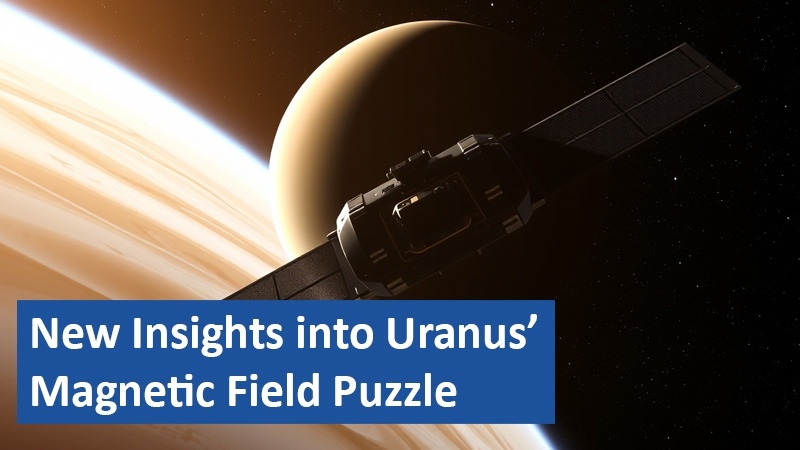In 1986, NASA’s Voyager 2 provided humanity’s first close look at Uranus. A recent study now suggests that a rare solar wind phenomenon may have skewed the spacecraft’s data. These findings challenge long-standing views about the ice giant.
By Aubree Ross
Solar Wind’s Role in an Empty Magnetosphere

During its brief flyby, Voyager 2 encountered Uranus’ magnetosphere in an unusual state—almost devoid of plasma. Scientists initially believed this revealed a unique property of the planet’s magnetic field. However, new research indicates that a powerful solar wind likely compressed the magnetosphere, pushing out plasma and creating an anomaly. According to researchers, such conditions occur only about 4% of the time, meaning Voyager 2’s data captured a rare moment.
Reevaluating Decades of Data
With less than six hours to collect observations, Voyager 2’s findings have shaped much of what is known about Uranus. Earlier interpretations suggested that its moons were geologically inactive. The new study, however, proposes that the observed plasma void was temporary and that the planet’s five largest moons might indeed show signs of geological activity under different conditions. This revelation calls for a fresh look at Uranus’ complex system.
Comparisons to Other Planets’ Magnetic Fields
Planetary magnetospheres provide critical insight into their environments. Uranus’ radiation belts, once thought to be extremely intense, may also have been influenced by the solar wind event. Researchers believe that the charged particle streams detected by Voyager 2 were amplified, explaining the earlier misinterpretation. Such findings highlight the dynamic nature of magnetic fields across the solar system and their susceptibility to external factors like solar winds.
The Case for Future Uranus Missions
These discoveries emphasize the need for more detailed investigations of Uranus. Scientists advocate for a dedicated mission to place a spacecraft in orbit and deploy a probe to study its magnetosphere, moons, and atmospheric conditions in greater depth. Such a mission could uncover new information about the planet’s geological and magnetic phenomena, offering a more comprehensive understanding of the distant ice giant.
The study underscores the importance of revisiting past data with new perspectives and methodologies. It also leaves intriguing questions about Uranus’ mysteries and the broader dynamics of our solar system.
Based on information from www.smithsonianmag.com and own research.